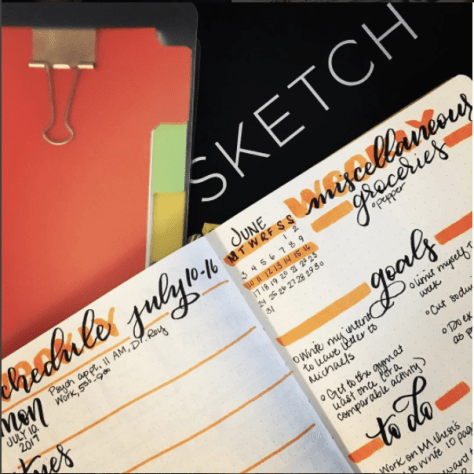I last wrote right before the world imploded– my world, anyway.
While I was writing my last blog post, white supremacists were likely holed away somewhere in Charlottesville, preparing for the “surprise” pre-rally march that they held through my alma mater later that very night.
I went to bed early that night, thinking only of the journals that I had yet to grade and the presentations I would have to watch the next day…whether or not the focus group I was advising would be as fabulous I knew they could be.
I had no idea.
When I woke up the next morning, it was a morning like any other. I smiled at my dog and pulled my phone toward me and did my pre-morning-walk glance through my phone to check my notifications.
It only took a few scrolls down twitter before I was sitting up straight in my bed, frantically scrolling to see if I could find an explanation for the pictures and videos of white supremacists carrying torches through the campus where I had once lived–where I had called home.
I spent the morning numb with rage. I was angry. I was afraid for my friends, and as I was getting ready for Keio, I texted everyone I knew who was in Charlottesville and made sure everyone was okay. I texted my friends who weren’t there but who attend/attended UVA to make sure they were okay. Everyone was fine– the kind of ‘fine’ that meant nothing had sunk in yet. The kind of ‘fine’ that meant you were turning the situation over and over in your mind but nothing was computing.
It felt impossible.
And to anyone out there who wants to immediately chime in to say, “But of course it was possible! This ain’t new!” I agree, but I also feel compelled to say that it was the feeling that was impossible. I study race. Well, I study literature and African-American history and culture. I know this was not only extraordinarily possible, but somewhat probable, I would even say, given Charlottesville’s long history of slavery and more recent history of growing tension in the community and amongst Black students.
But it felt impossible.
It felt impossible that people I knew from school, my friends, people I considered my family were close enough to people who, given the opportunity, would gladly hurt them, to take clear photos and videos. It felt impossible that they had invaded the residential space of where one of my best friends was going to be calling home– the Lawn. She moved into her room the next day. It felt like living in a dystopian novel that suddenly my Twitter feed was filled with articles on major news cites and magazines by people I knew, was friends with, or knew of through other friends– giving their first hand accounts of what we need to call a terrorist attack.
The war I had been theoretically battling in suddenly attacked close to home– literally.
I saw my friends who had been like me, theoretical and protest driven, advocates and teachers, suddenly become foot soldiers in a war that a large part of America refuses to acknowledge.
Despite the turmoil, I had to go to work Saturday morning. I couldn’t hide in bed or jump in my car and drive to Charlottesville. All I could do was put on an all black outfit and prepare myself to either verbally attack or educate– as the only Black person in the program, if I’m being honest with myself, I was mostly preparing to attack.
There is much I regret from that Saturday. I regret not asking to be the one to explain what had happened in Charlottesville to the Keio students– I wanted them to see the impact something like that had on a personal level, as a Black person, as a Black woman, as a UVA alumna with friends still in school and strong ties there. I regret holding a hand while tears were shed over the Holocaust, while my Black friends were in the kind of urgent, immediate danger that I had never understood before that moment. I regret letting the conversation be dictated by the white response, by white feminism, by people who wanted to talk about the anti-semitic components. My regret was not that we talked through that lens, but that I didn’t insist that this was a conversation that needed to have Black people, Black experiences and Black responses in it. I didn’t feel like I was allowed to express my pain. I let people talk over me, because their experiences were clearly more important than my own; I let several people cry and rage to me; but I didn’t do the intellectual work in the moment that I had always insisted I would do– in theory.
I’m the type of person that claims to be the protector of the underdog, the verbal attacker, the one who “takes-no-shit,” and yet in that moment I didn’t do what I told myself I had been doing all along. I didn’t speak up. I didn’t make anyone hear me.
Even when I took a small group of the Japanese students with me to the Charlottesville vigil in Williamsburg, I continued to allow myself to be talked over, my silence sealing my complicity with ideas I did not quite agree with.
I was angry at myself for not getting angry with the people who deserved it.
The only thing that got me through that day were small moments: a text from a friend saying he was okay; the assistant director of Keio taking a break to stand outside with me, just standing together, watching a video of the counter protests, but also just standing in silence; one of my students coming up to me to ask if she could “go to Charlottesville,” after taking group pictures, as a way to ask if she and some other students could accompany me to the vigil.
The small moments were what got me through the rest of the trip. I stayed so wound up about Charlottesville that I couldn’t bear to talk to anyone who wasn’t talking about it. I couldn’t sit still during conversations about make-up or music or Donald Trump. I spent whatever free time I had reading articles about Charlottesville and looking at pictures of the rallies on my phone. The first thing I did when the trip went to D.C. was find a friend from UVa who I could talk to and the floodgates finally opened. No one around me seemed to get that something inside of me had ripped and I was bleeding, and I was carrying around that pain while still trying to function as a leader.
The end of Keio passed in haze for me. There were certainly moments that broke through the haze and pulled me back to Earth: taking the students to the Japanese embassy, visiting the National Museum of African-American History and Culture for the first time, meeting up with my long-time friend Jared, touring the Air and Space Museum with two of my students and being dorks together, and the end of the program talent show, which turned into quite the spectacle at the end. (I think there’s a video somewhere on the internet of me dancing and singing to Taylor Swift songs.) Sad as I was for the students to go, I was relieved to be able to crawl back to my parents’ to vent to them, cry, and pet my dog.
Keio ended almost 10 days ago, but I still haven’t got my feet back under me yet. I’ve not really been doing much, even though I should be editing the Masters thesis draft that my advisor sent back to me and getting ready for classes, which start Wednesday. I still don’t feel right, to be honest. It’s partially exhaustion, partially mental and emotional distress, partially other mental illness related issues. I’m not quite ready to deal with people. I’m not ready to move on to other topics. I’m still dealing with the one at hand.
At the very least, the start of the semester means I’ll be back to regularly scheduled Black Girl Does Grad School posts, every Sunday. I’m really glad I thought to create a space over a year ago where I could decompress about things happening in grad school and in life, particularly, when no one else is listening. It’s been a useful exercise and also a huge contributing factor to my sanity. (I mean, let’s not be too strict in defining sanity…but anyway…)
So, until next week, when we embark on my next adventure– year 2.
BONUS MATERIAL!
If you made it this far, thanks for reading! I just wanted to also quickly mention that after my fun little archive visit, it turns out that someone at VCU wrote a blog post about me, my work and my blog! It was super flattering so I just thought I’d share the link in case you felt so inclined as to check it out.











